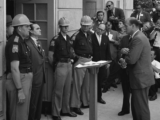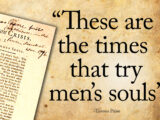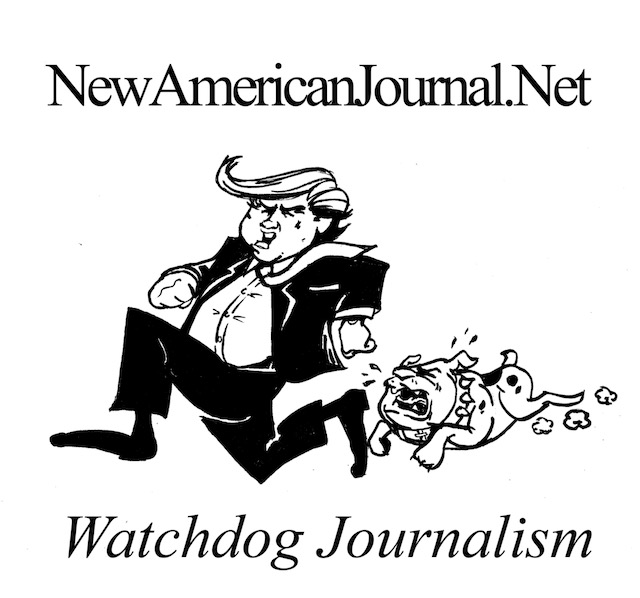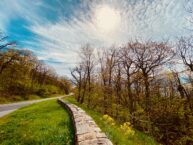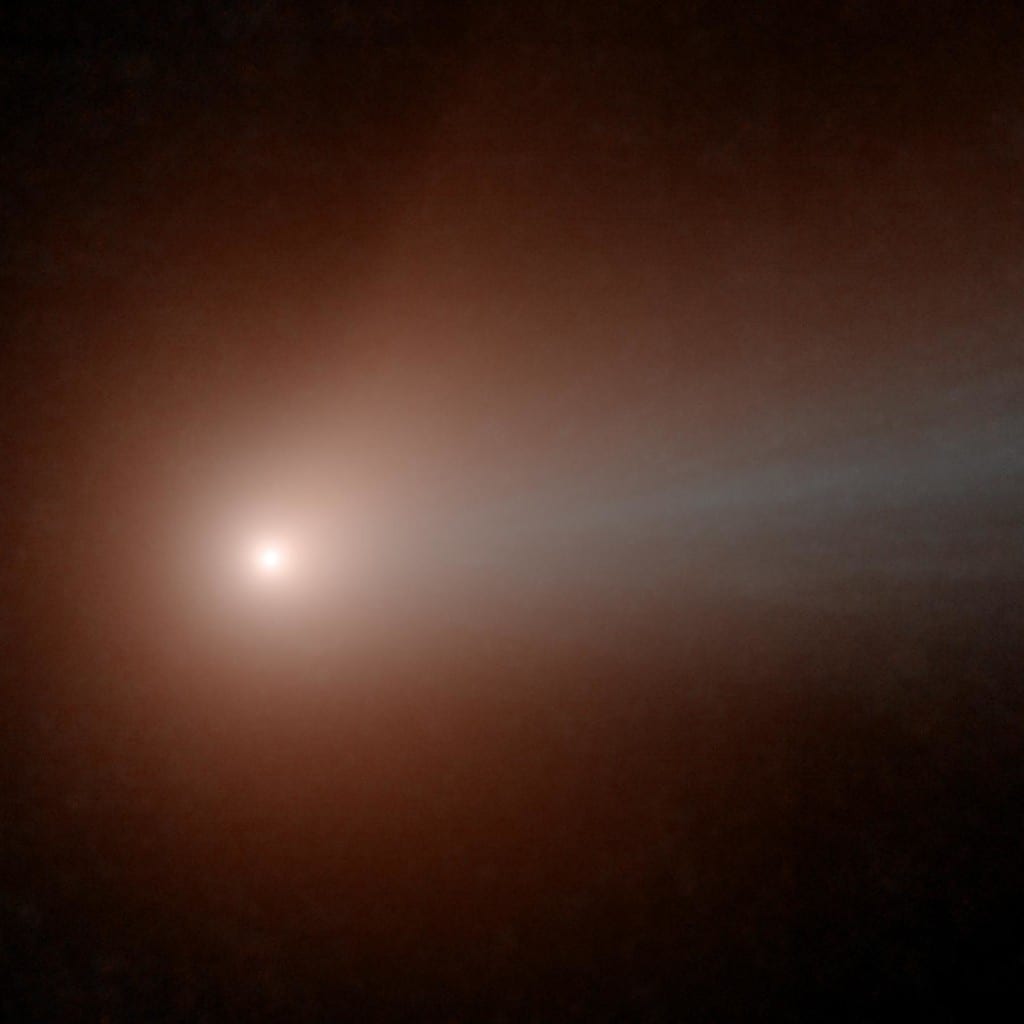
The NEOWISE spacecraft viewed comet C/2014 Q2 (Lovejoy) for a second time on January 30, 2015, as the comet passed through the closest point to our sun along its 14,000-year orbit, at a solar distance of 120 million miles (193 million kilometers): NASA/JPL-Caltech
Millions of images of celestial objects, including asteroids, are now available to the public online from NASA’s Near-Earth Object Wide-field Survey Explorer (NEOWISE) spacecraft.
“NEOWISE is a vital asset in NASA’s program to find objects that truly represent an impact hazard to Earth,” Lindley Johnson, program executive for the Near-Earth Object Observation Program at NASA Headquarters in Washington, said in the release. “The data reveals how far we’ve come to understand the danger to Earth but it will still take a concerted effort to find all of them that could do serious damage.”
The collection of millions of infrared images and billions of infrared measurements of asteroids, stars, galaxies and quasars were taken over a one year period from Dec. 13, 2013 to the same date in 2014, after the spacecraft was relaunched from a lengthy hibernation.
“One of the most satisfying things about releasing these cutting-edge astronomical data to the public is seeing what other exciting and creative projects the scientific community does with them,” said Amy Mainzer, principal investigator for NEOWISE at NASA’s Jet Propulsion Laboratory (JPL), in Pasadena, California.
In the first year of the survey, 2.5 million image sets were recorded, detecting more than 10,000 solar system objects. More than 129 new solar system objects were found, including 39 previously undiscovered near-Earth objects.
“And we’re far from finished,” Mainzer said. “We’re only into our second year of additional science collection, and we’ve already added another 21 new discoveries including six new near-Earth objects.”
Each of the images also contains a multitude of background stars, nebulae and galaxies.
NEOWISE is a space telescope that scans the skies for asteroids and comets. The telescope sees infrared light, which allows it to pick up the heat signature of asteroids and obtain better estimates of their true sizes. As a result, the craft can see dark asteroids that are harder for visible-light surveys to find.
Nearly all of the NEOWISE discoveries have been large — hundreds of yards, or meters, wide — and very dark, similar to printer toner. When NEOWISE’s infrared data on an object is combined with that of a visible-light optical telescope, it helps scientists understand the object’s composition.
NEOWISE always looks in the dawn and twilight skies – the direction perpendicular to a line between Earth and the sun. This unique vantage point makes it possible for NEOWISE to spot objects that approach Earth from the direction of the sun, unlike ground-based telescopes that are only able to view the night sky.
Originally called the Wide-field Infrared Survey Explorer (WISE), the spacecraft was placed in hibernation in 2011 after its primary mission was completed. In September 2013, it was reactivated, renamed NEOWISE and assigned a new mission to assist NASA’s efforts to identify the population of potentially hazardous near-Earth objects and help characterize previously known asteroids and comets to provide information about their sizes and compositions.
NASA Wednesday announced more details in its plan for its Asteroid Redirect Mission (ARM), which in the mid-2020s will test a number of new capabilities needed for future human expeditions to deep space, including to Mars. For ARM, a robotic spacecraft will capture a boulder from the surface of a near-Earth asteroid and move it into a stable orbit around the moon for exploration by astronauts, all in support of advancing the nation’s journey to Mars.
The agency plans to announce the specific asteroid selected for the mission no earlier than 2019, approximately a year before launching the robotic spacecraft.
NASA also announced it has increased the detection of near-Earth Asteroids by 65 percent since launching its asteroid initiative three years ago.
In 2012, the president’s NASA budget included, and Congress authorized, $20.4 million for an expanded NASA Near-Earth Object (NEO) Observations Program, increasing the resources for this program from the $4 million per year it had received since the 1990s. The program was again expanded in fiscal year 2014, with a budget of $40.5 million.
NASA is asking Congress for $50 million for this work in the 2016 budget.
To view the NEOWISE data click here
For more information about NEOWISE click here..
More information about asteroids and near-Earth objects is at available online here.
For more information about the Asteroid Redirect Mission, click here.
Before you continue, I’d like to ask if you could support our independent journalism as we head into one of the most critical news periods of our time in 2024.
The New American Journal is deeply dedicated to uncovering the escalating threats to our democracy and holding those in power accountable. With a turbulent presidential race and the possibility of an even more extreme Trump presidency on the horizon, the need for independent, credible journalism that emphasizes the importance of the upcoming election for our nation and planet has never been greater.
However, a small group of billionaire owners control a significant portion of the information that reaches the public. We are different. We don’t have a billionaire owner or shareholders. Our journalism is created to serve the public interest, not to generate profit. Unlike much of the U.S. media, which often falls into the trap of false equivalence in the name of neutrality, we strive to highlight the lies of powerful individuals and institutions, showing how misinformation and demagoguery can harm democracy.
Our journalists provide context, investigate, and bring to light the critical stories of our time, from election integrity threats to the worsening climate crisis and complex international conflicts. As a news organization with a strong voice, we offer a unique, outsider perspective that is often missing in American media.
Thanks to our unique reader-supported model, you can access the New American journal without encountering a paywall. This is possible because of readers like you. Your support keeps us independent, free from external influences, and accessible to everyone, regardless of their ability to pay for news.
Please help if you can.
American journalists need your help more than ever as forces amass against the free press and democracy itself. We must not let the crypto-fascists and the AI bots take over.
See the latest GoFundMe campaign here or click on this image.
Don't forget to listen to the new song and video.
Just because we are not featured on cable TV news talk shows, or TikTok videos, does not mean we are not getting out there in search engines and social media sites. We consistently get over a million hits a month.
Click to Advertise Here





